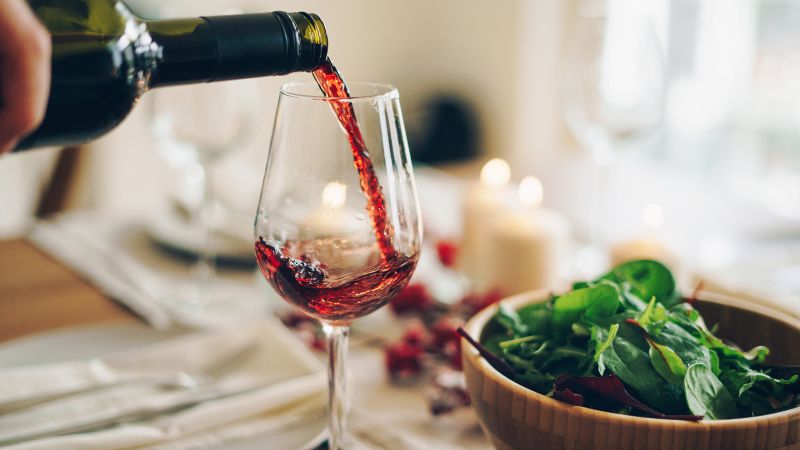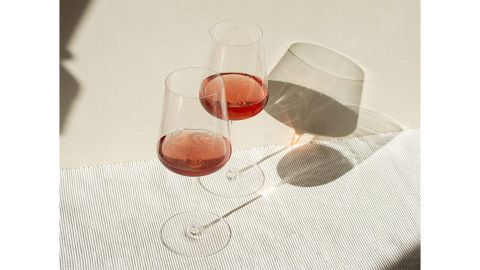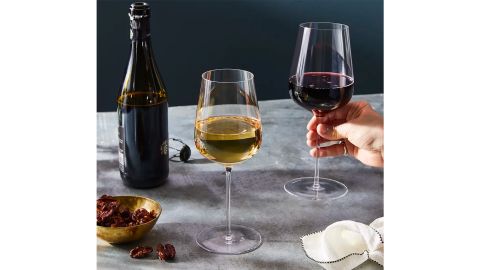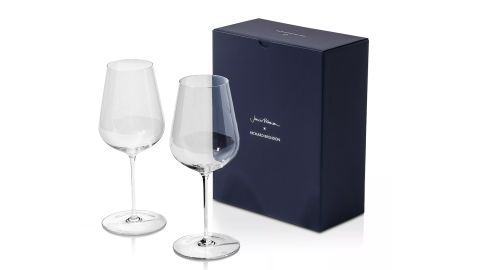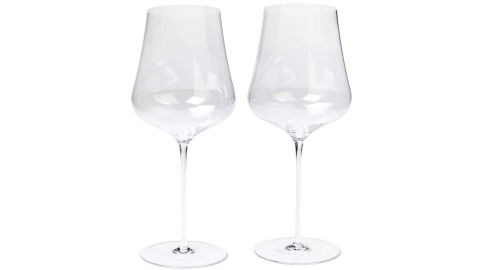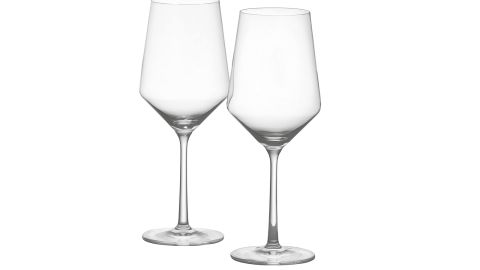The market is filled with almost as many different types of wine glasses as there are different wines, making the task of selecting one go-to wine glass very difficult — but not impossible.
In fact, I’m ditching my varietal glasses for a universal style fit for any kind of wine you pour. Here’s why.
A universal wine glass simply means it is engineered to enjoy most wine types out of a single glass. It is complementary with a range of wines: heavy body, light body, sparkling and most everything in between. This way, you don’t need a different glass for sauvignon blanc versus a pinot noir, chardonnay and even champagne. There are excellent varietal glasses out there for specific wines, but for practicality, a universal glass goes a long way, given its multi-purpose.
This saves money and valuable space in your cupboards. (Marie Kondo would be proud.)
However, not every glassmaker agrees on the perfect shape for a universal glass. So, I’ve tested out a fleet of them. After tasting sparkling, white and red varietals in a variety of universal glasses, here are my top five for the perfect wine glass.
• Related: Gifts for wine lovers that they’ll actually use
The Zalto Denk’Art Universal glass is a big hitter. Yes, it’s mighty pricey. But given how much you’ll save in not having a lot of varietal glasses, this is worth the splurge. This glass tested exceptionally on all the wines, far above the rest. The aromas are pronounced and balanced: You get fruit, florals, herbaceousness and earth, all in harmony. When tasting, the wines hit every part of the palate.
The glass itself is delicate, with a long, thin stem, a paper-thin bowl and wide base. It’s like drinking out of air. Each wine danced in this glass, showcasing even the most delicate of nuances, like the hint of dried orange peel on the white wine, or hints of cocoa nibs on the red. If you have a special bottle you’ve been saving, this glass is the perfect accompaniment. Treat yourself!
This New York-based glassware company is fairly new on the market and making quite the splash. (Pun intended.) I wanted to know if the hype was real. I can happily report, it is.
The Glasvin Universal glass tested very high with each wine in my samplings. The nose on the wines showed brightly, catching florals, fruits, earth, smoke and herbs. The taste picked up on savory notes of salinity in the wine, which other glasses failed to show on the white and sparkling ones.
The stem on the glass is thin, the bowl and rim are a bit larger than the Zalto, though still very light. Plus, the company touts this is dishwasher safe, though I don’t have the heart to try it. For half the price, this is my new go-to glass for everyday use.
Jancis Robinson is one of the world’s most highly regarded wine critics and writers. I have followed her work for years, and I was thrilled when she released a universal wine glass in partnership with designer Richard Brendon.
At first glance, the glass is a beautiful tulip shape — a round, bulbous bowl with a narrow rim. Jancis has a high focus on floral aromatics in a lot of her writing, and this glass seems to be built exactly for that. The narrow rim concentrates the aromas, letting you pick up on perfumey notes and stewed fruits. This flower-power glass delivers pretty wines on the palate, just as it is pretty to look at.
This Austrian glass has a cult following in the wine world. It is top-rated by Wine Folly and is currently their signature glass. The shape here is the most unique out of our lineup: the wide bowl has a deep curve as it leads up to the rim. The bowl resembles a mini decanter more than a standard wine glass. It is heavier and thicker-stemmed than the glasses listed above, making it a sturdy and budget-friendly option for everyday use.
The aromas on the wines I tested highlighted wood spice and herbal notes more than others. Overall, a good glass to have around when you’re not busting out your finest glassware.
This budget-friendly German glass offers up a modern look with surprisingly good structure to back it up. It is significantly heavier than the glasses listed above, but not clunky. When testing the wines, the triangular base on the bowl allowed the wines to open up, and the narrow rim collected most fruit, floral and herbaceous notes. Its slimmer bowl makes it especially good for sparkling wine.
• Related: The best wine openers we’ve tested
The next time you’re shopping for wine glasses, look for the following basic characteristics in the glass. A thin bulbous bowl that allows wine to breathe and a narrow rim that collects aromas is a great place to start. A staple set of reliable wine glasses is worth the investment, especially if you’re drinking good wine.
Bowl shape: The bowl shape is designed to aerate your wine and collect aromas. Think of wine as a sleeping, living being in the bottle. When you pour it into a glass, it needs to wake up, stretch and yawn. With enough oxygen contact the wine opens up, and releases beautiful aromas like strawberry, cedar, orange peel and so on. That is why you decant wine, and also swirl it in the glass. Go for a bowl shape that is wider on the bottom, which allows the wine to breathe, and a narrower top, which collects aromas.
That also goes for sparkling wine: Champagne tastes much better in a white wine glass. Flutes restrict the wine from opening up; they are simply aesthetic glasses if you want to see the bubbles dance. Flutes don’t let sparkling wine shine.
Crystal vs. Glass: Crystal wine glasses can get paper thin without being too fragile. They have minerals that strengthen the material. You want your glasses to be thin so they’re not in the way, so the wine takes center stage with every sip. So no mason jars, friends.
Stem vs. Stemless: Stems on wine glasses are there so you don’t hold your glass by the bowl. Our body temperature can heat up the wine in the glass, particularly white wines. When in doubt, go for a stem. Save the stemless glasses for water or cocktails.
Clear glasses always: Colored wine glasses are fun, but not if you really want to appreciate your wine. A clear glass lets you inspect the wine, tell its age from rim color, and even its body when you swirl. Remember, a culinary experience involves all senses and sight is a mighty big one. Why restrict it?
Henna Bakshi is a wine expert and TV Producer at CNN/HLN. She is WSET II (Wine and Spirits Education Trust) certified. For pairing advice and drool-worthy recipes, follow her on Instagram @hennabakshi.

